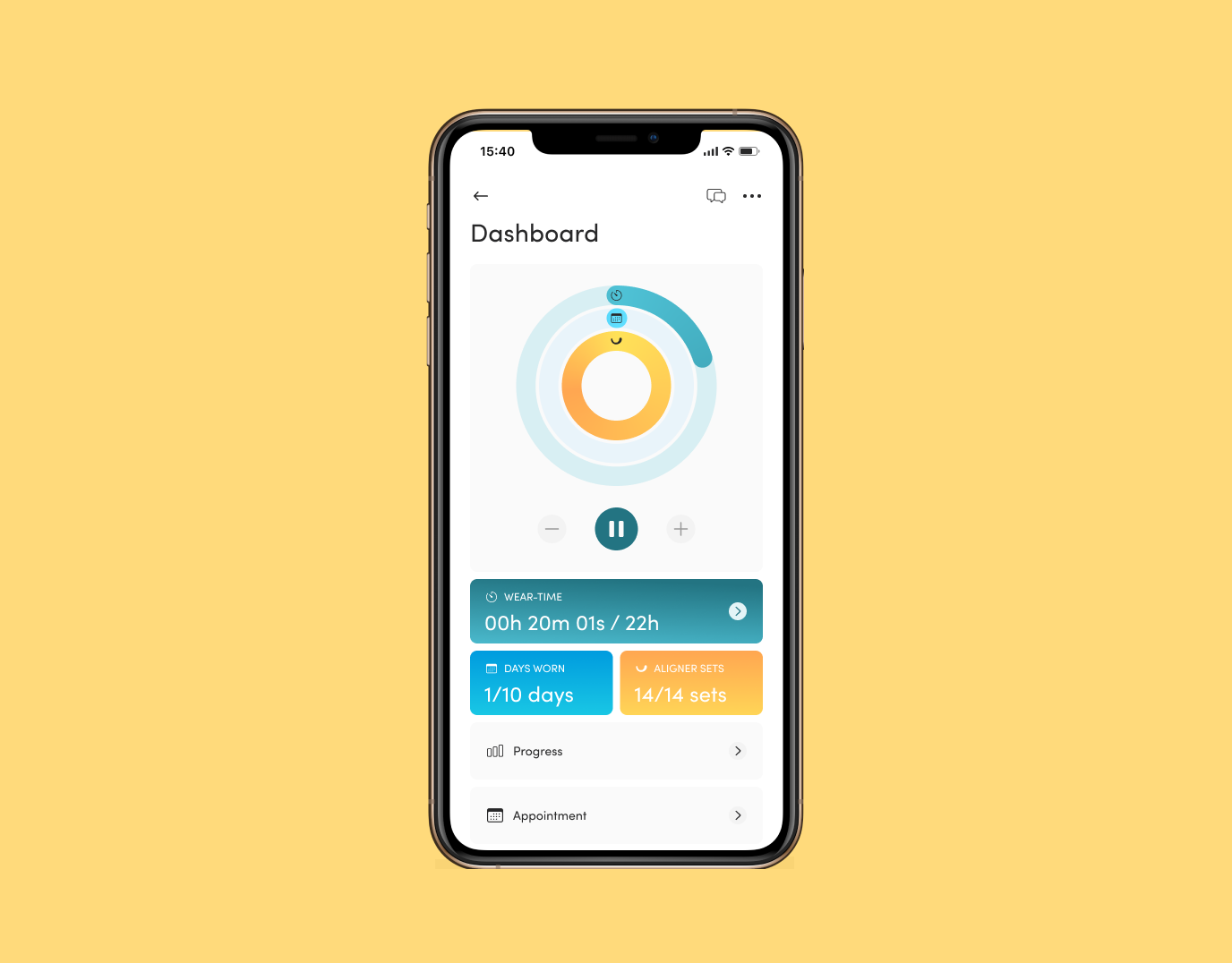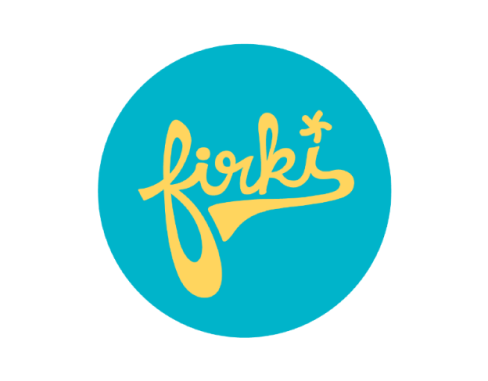Recycloo is a solution born out of the motivation to understand why people do or don't recycle. An app that brings about a certain transparency to the process of recycling in the eyes of the everyday person - and thus inspiring confidence in users to recycle more and save the earth.
Timeline:
12 days
My Role:
Solo | UX Researcher and Designer
Tools Explored and Used:
Pencil & Paper
MURAL
Figma
InVision
Methods Explored:
User Interviews
Affinity Mapping
Persona Creation
Sketching - Crazy8 and Doodling
Paper Wireframing
Figma Wireframing and Prototyping
Usability Testing
Recycling bins for various materials | Photo by Paweł Czerwiński on Unsplash
About the Project
How did it come about?
This is my first project at General Assembly's User Experience Design Immersive Program. The nature of this project in the class led us to identify a topic area to explore that we think people experience.
I chose to explore the area of Environment & Sustainability, seeing as how the recycling efforts in Singapore (or rather, the lack of) always bugged me at some level. This project yielded some surprising insights of how residents of Singapore perceived the concept of recycling.
Plastic bottles and aluminium cans in the same plie of recycling trash | Photo by Nick Fewings on Unsplash
Designing the right thing
Why do people recycle? Why don't they recycle?
Choosing an issue that "we think people experience" is easy. However, to validate the existence of such a problem I interviewed 10 people to find out how prevalent recycling is in Singapore, what kind of presence it has, and how residents of Singapore perceive recycling.
I conducted interviews with an open mind, before jumping into solutions to understand the problem better.
As I was interviewing the 10 people, I was amazed by the breadth of insights I was able to gain access to. They pretty much broadened my mind, and broadened the scope of a potential solution
I was curious where people noticed recycling bins as they went about their lives. Locations where recycling bins are more prominent do affect the extent of recycling, and people’s behaviour and their recycling habits.
Throughout the interview, I found out that:
- when people are at home they tend to collect recyclables;
- when people are outside, they tend to dispose recyclables in the general trash
I then probed to further understand people's behaviours towards recycling:
About 70% of the respondents find it hard to access a recycling bin when absolutely necessary
Media and awareness programs play an important role in shaping people’s perspective towards various concepts.
7 out of 10 have seen one documentary showing recyclables ending up in incineration plants.
3 out of 10 do not know what happens after recycling bins are emptied
3 out of 10 do not know what happens after recycling bins are emptied
When newsworthy programs like such as these make the headlines, people tend to absorb such information, and are thus stuck with a perception, with no other information that could convince them otherwise.
What I found next, now, makes more sense:
About 80% of the respondents were frustrated over the lack of information on the impact of recycling.
With less and less transparency over the actual process, and the part they’re playing in the positive impact of recycling, it’s hard to keep the motivation going.
A plastic bottle being recycled at the appropriate bin | Photo from GreenBiz
Personifying the Users
Who am I solving the issue for?
Meet Aloysius.
Aloysius is young, energetic and loves the outdoors. He likes trekking and hiking, biking, playing badminton with his friends, and of course Netflix.
He loves the local cuisine, and gets the occasional takeout from the nearby food court. He tries his best to separate his trash but sometimes when he can't find a recycling bin, he dumps everything into the general waste bin.
He acknowledges that it’s bad for the environment, and the material can possibly be repurposed somewhere else.
"Recycling is therapeutic"
Photo by Juan Encalada on Unsplash
He wants to:
- be more mindful of recyclable trash
- get his friends and family to recycle as well
- understand the impact of this recycling
However, he has:
- a hard time finding information as to how recycled material is repurposed
- a hard time finding a recycling bin in public places
Aloysius needs to have better access to recycling bins so that he does not resort to throwing his trash into the general rubbish.
He is losing confidence in the concept of recycling. He needs to know the impact and the benefit of his recycling, but there isn’t enough transparency about the process from the recycling companies.
Designing things right
How to address the problems identified?
"Bad ideas are building blocks to great ones"
Adhering to the quote above, I had my early ideations done through activities like the Crazy8. Crazy8 is where you take a blank piece of paper, divide into 8 sections, and sketch out 8 ideas in 8 minutes. You devote a full minute on one sketch, and you move on to the sketch once the minute is up.
Crazy8. Having straight lines or legible handwriting was the least of my worries
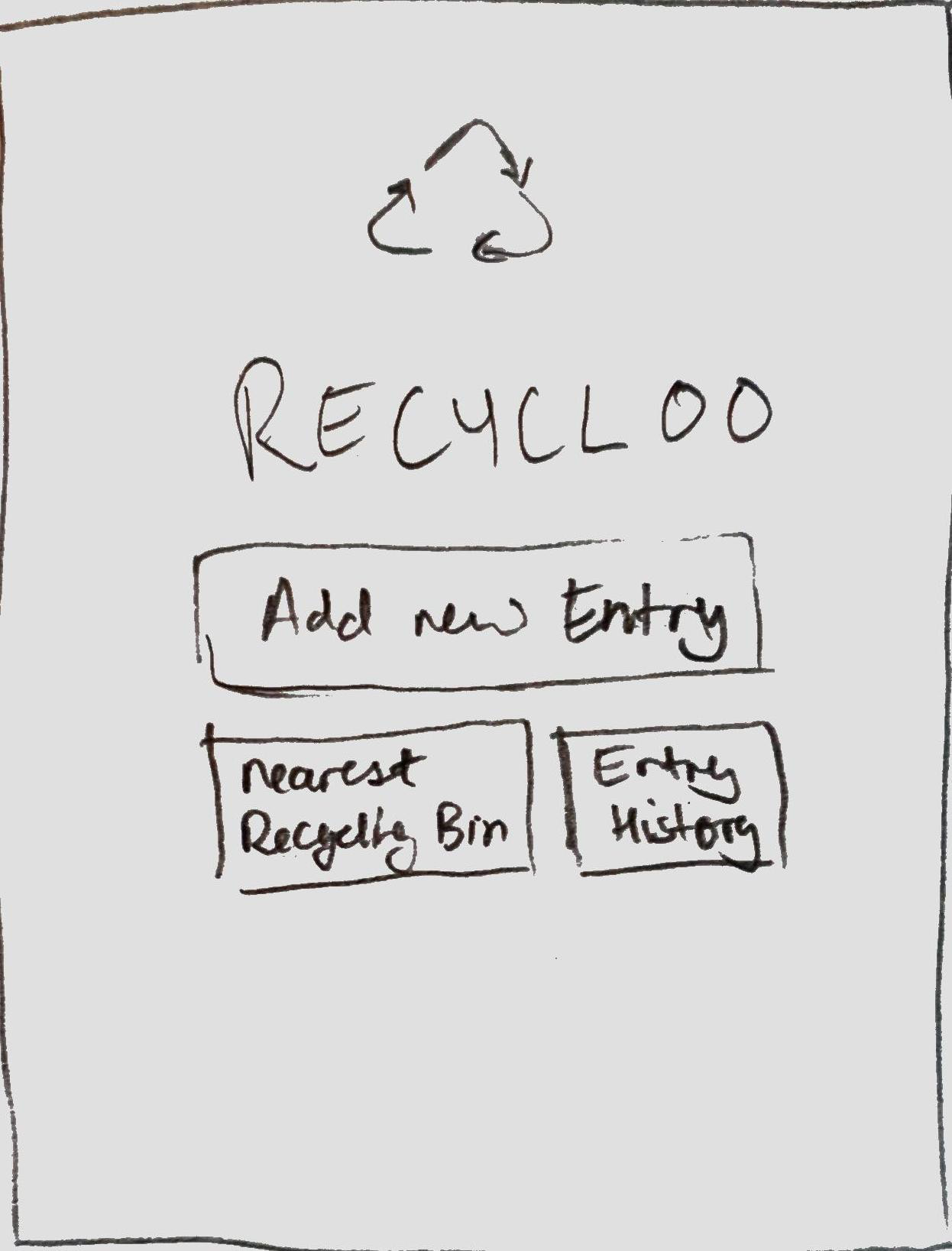
Home Page
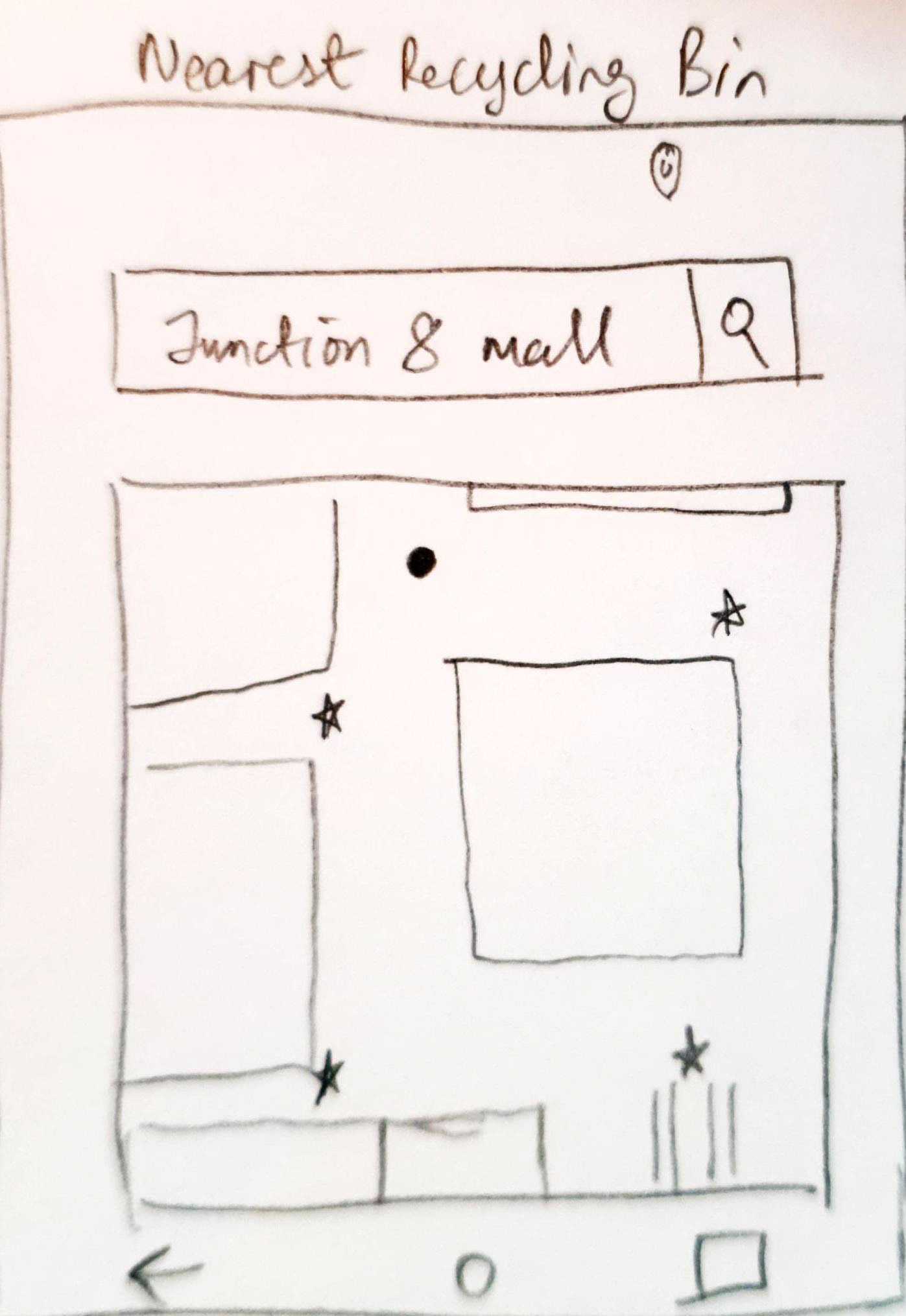
Nearest Recycling Bin
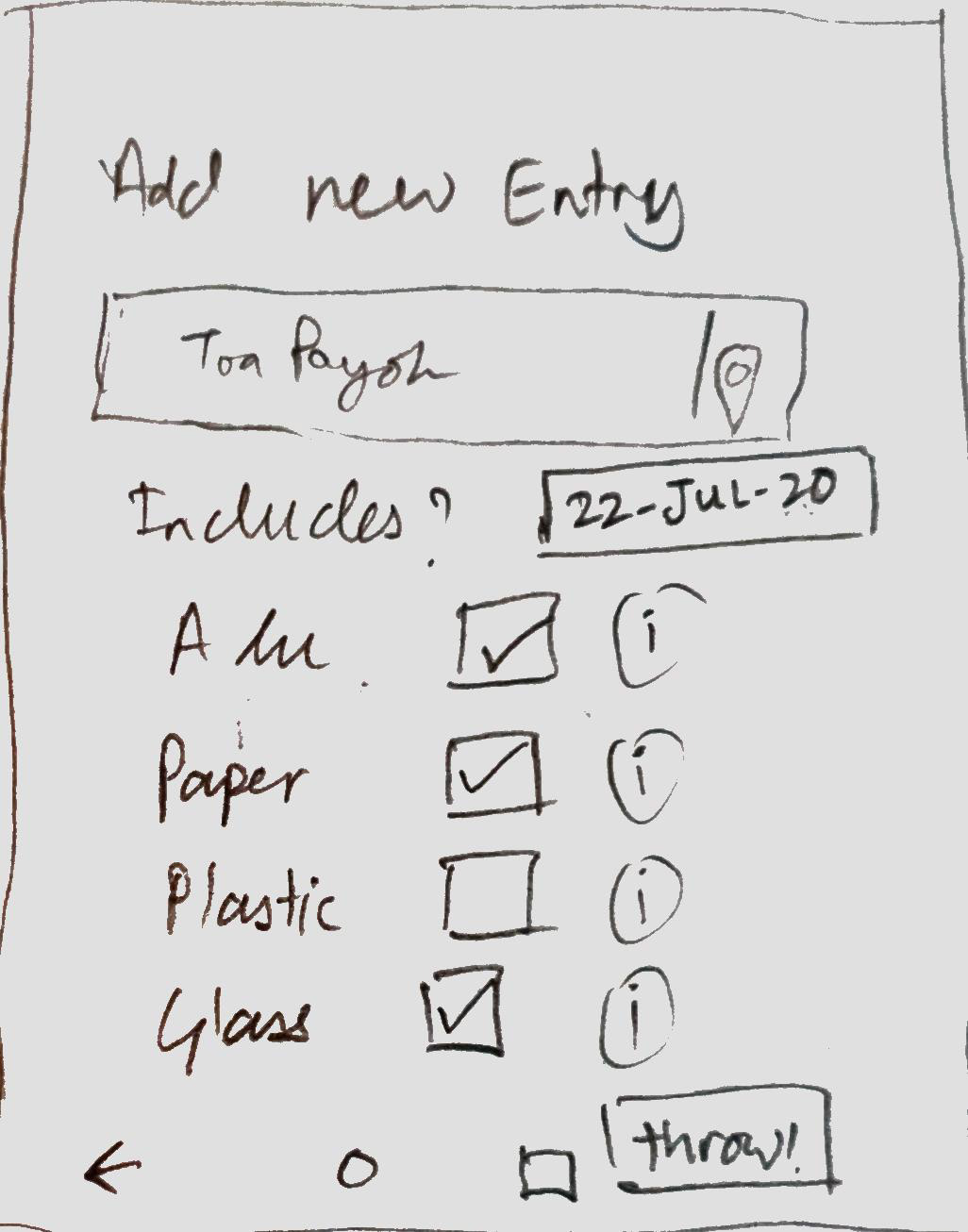
Add a new trash to track
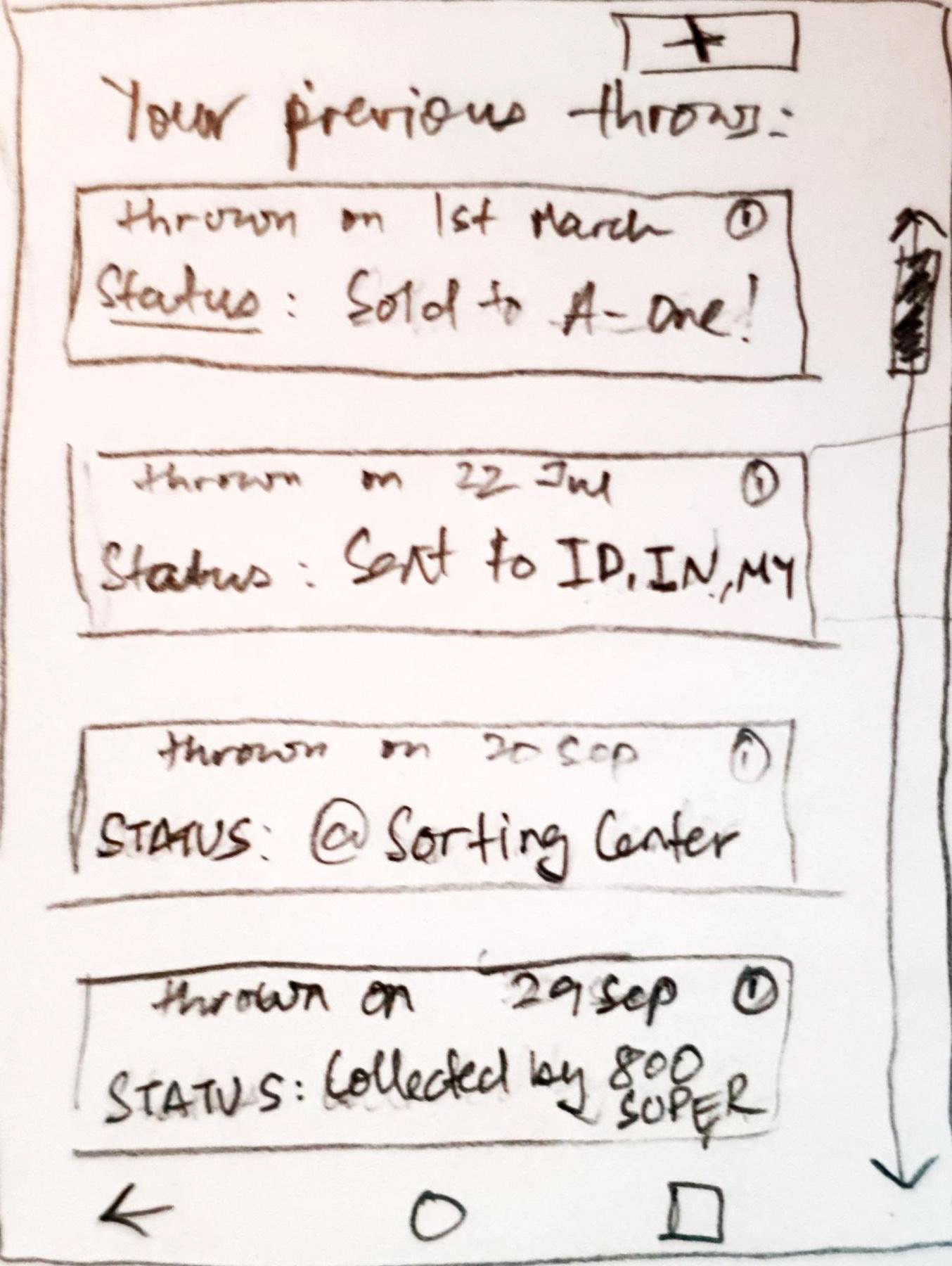
Previous Throws History
Initial paper wireframes. Again, straight lines were not part of the worries.
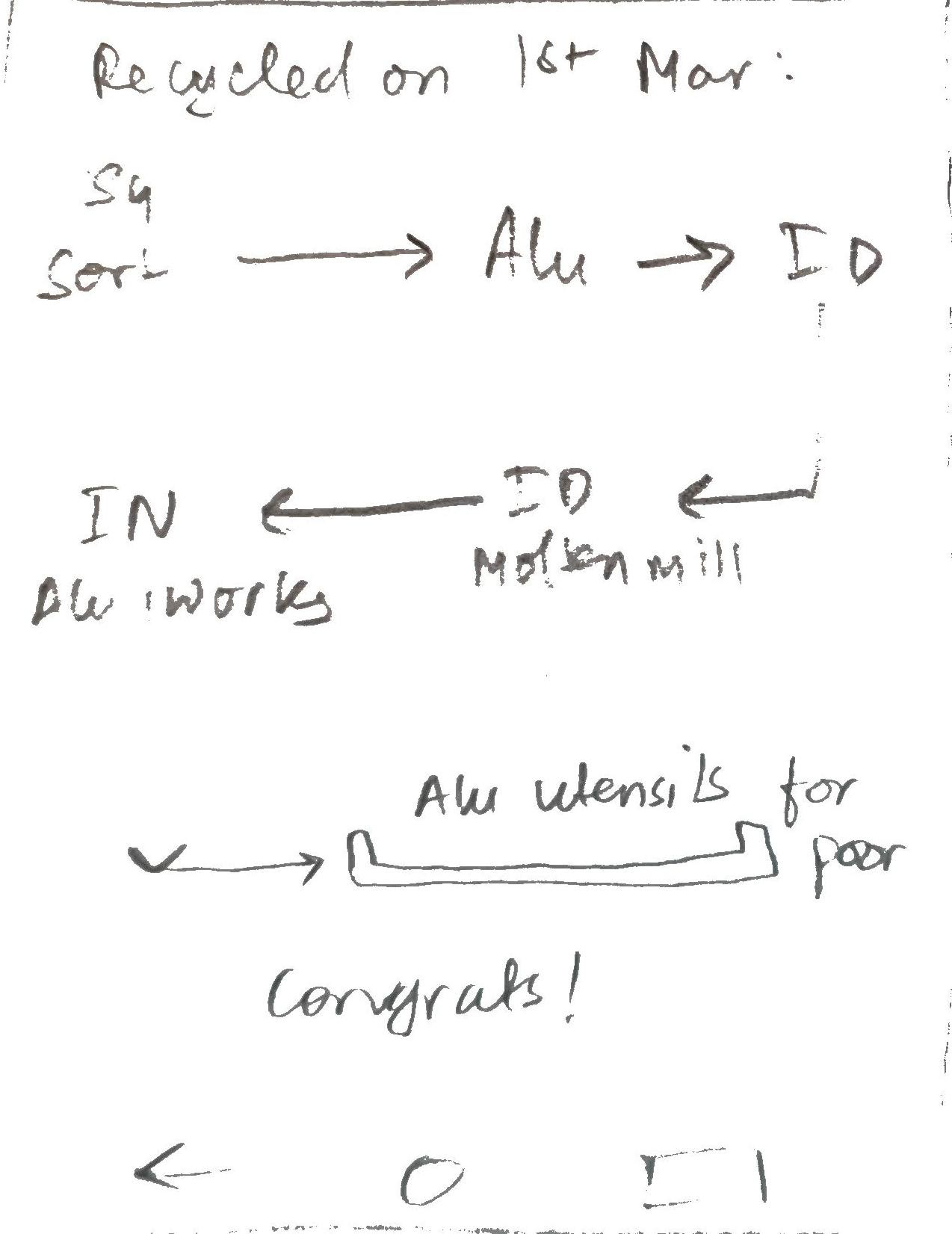
Tracking of Trash (Aluminium)
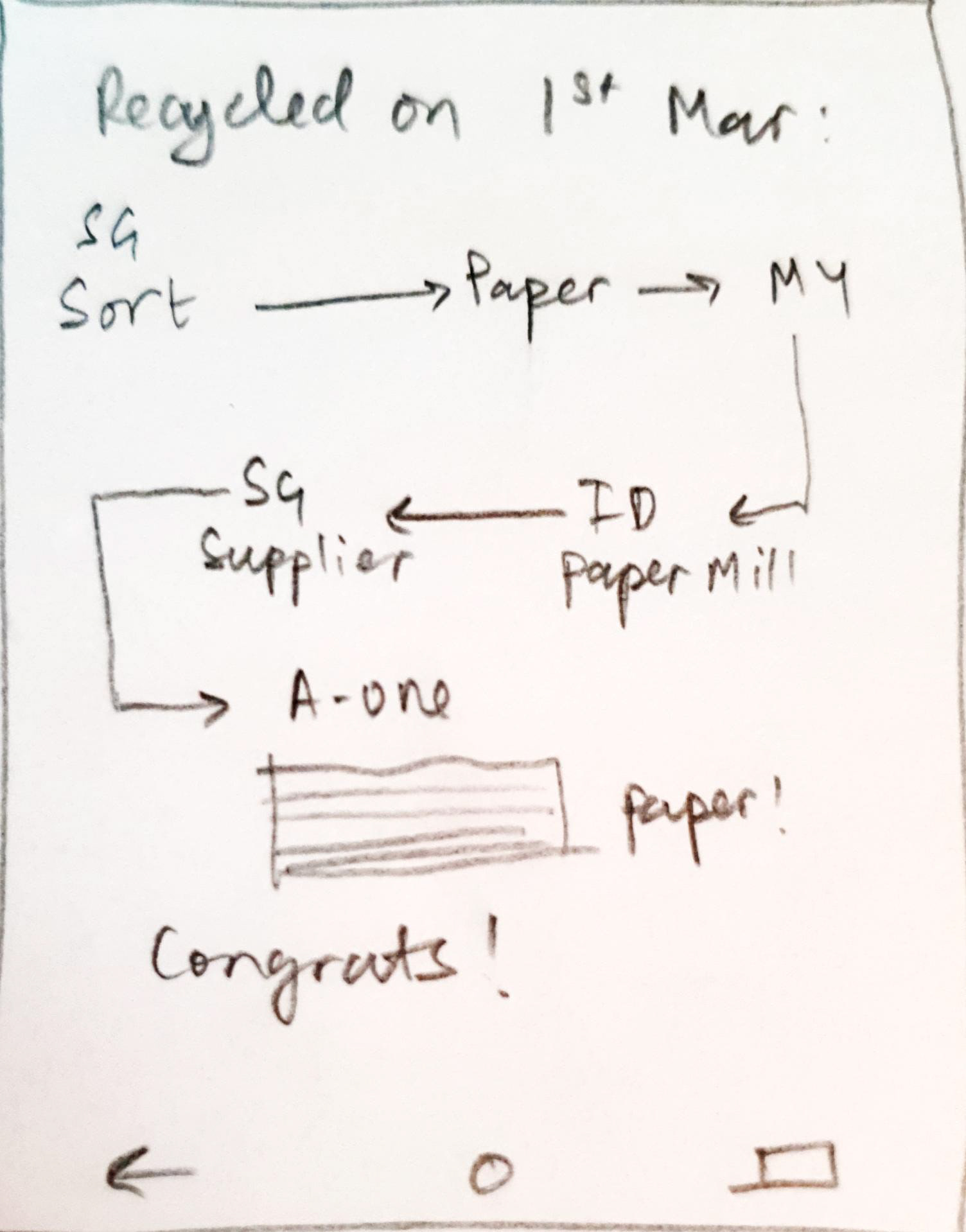
Tracking of Trash (Paper)
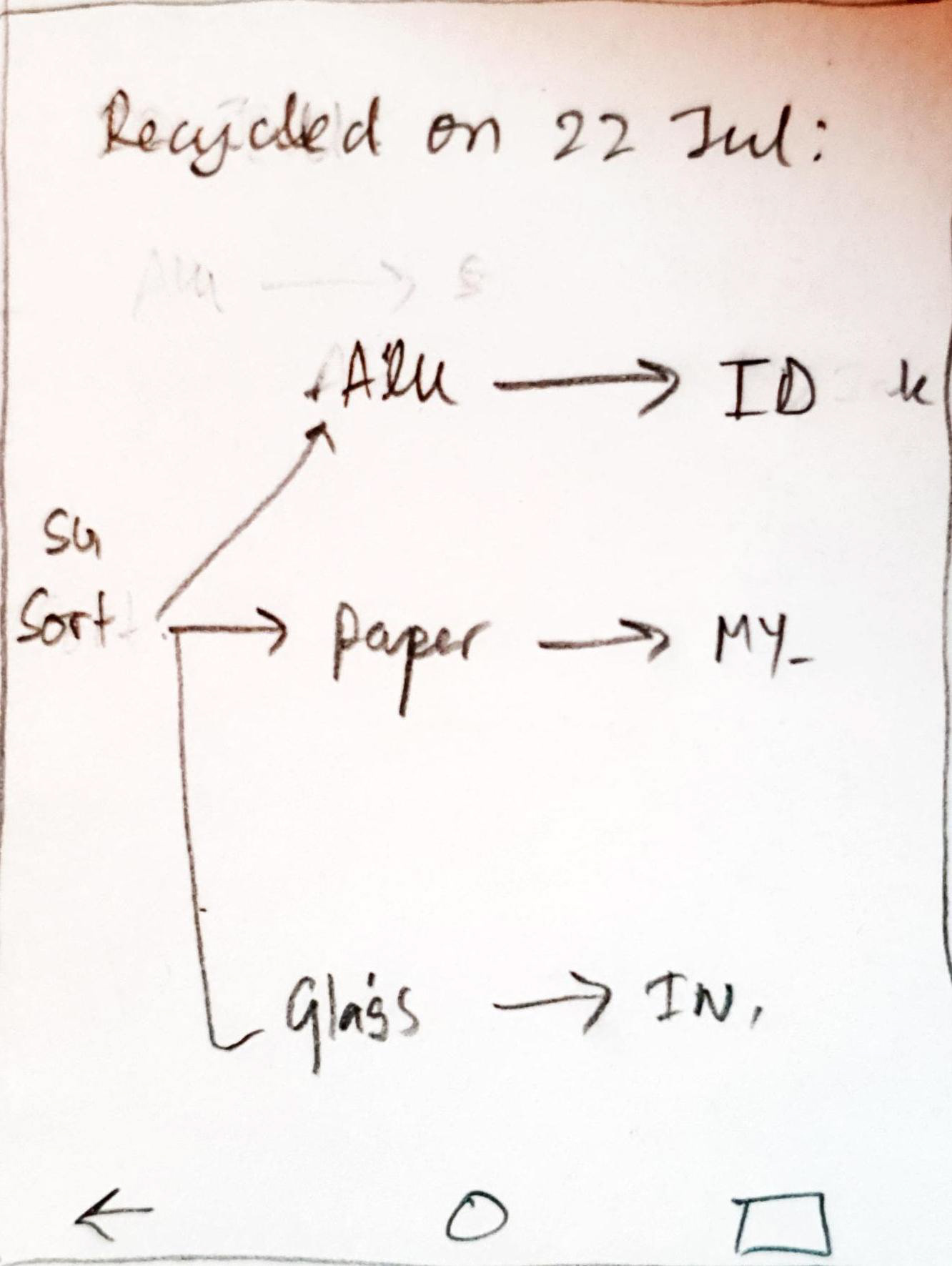
Tracking of Trash (Overview)
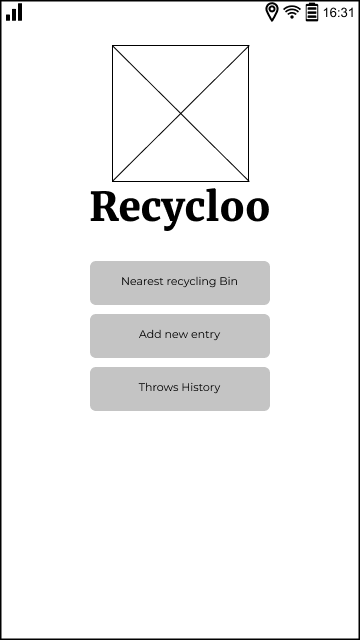
Home Page
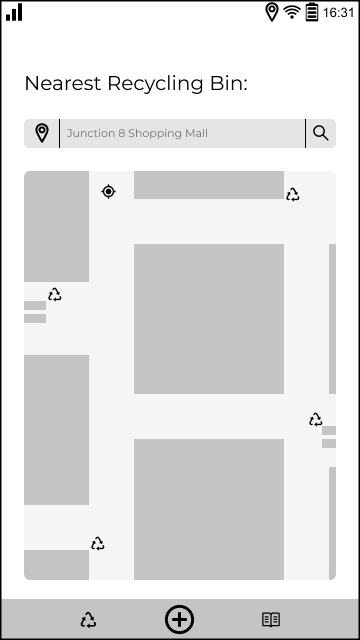
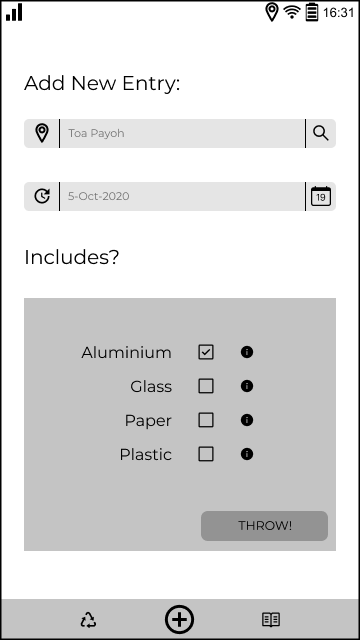

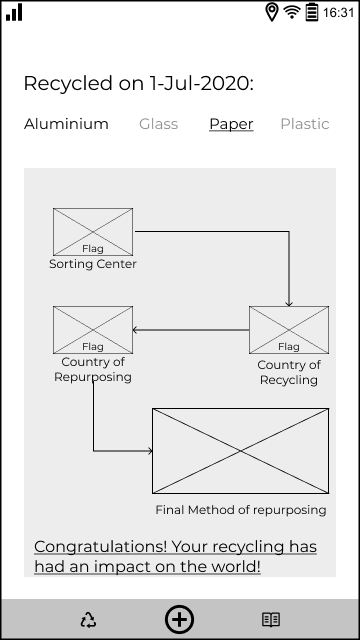
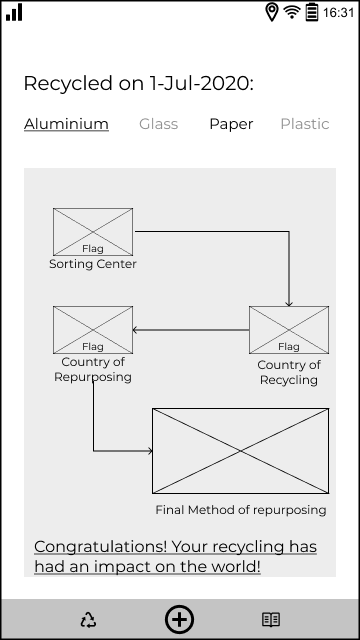
Digital Wireframes. Finally got those lines straight.
It was important that, now, I work on ideas that would directly address the two problem statements that I defined earlier on.
Moving onto digital wireframes and prototyping, I decided to work on the following ideas:
1. Nearest Recycling Bin:
At any point of time and location, Aloysius can open Recycloo and find recycling bins around him. The screen will consist of a map of the location selected, and will indicate the recycling bins around the location
2. Add New Entry to track trash
Aloysius can then add the items that he recycled, into a tracking system. Recycloo uses information such as the collection patterns, established recycling pathways and recycling processes to provide users a tracking of this recycled trash.
3. Track Previous Entries
Aloysius can also track at what point of the recycling process are his previous instances of recycling. The tracking points of the recycling process are as follows:
- You: the moment Aloysius recycles
- Collection: trash has been collected by a collection company
- Sorting & Processing: The trash is being sorted at a facility
- Manufacturing: The trash as been sorted and sent to a factory to be remoulded into raw material
- Repurpose: The recycled raw material has been sent to manufacturers of finished goods.
Once the trash has been repurposed, the recycling process is complete, and Aloysius is reassured that what he once recycled, is indeed back into the ecosystem.
Testing and Iterating
Nearest Recycling Bin
Users found it less than easy to navigate to the nearest recycling bin screen due to the home screen labelling. They were also stuck once they reached the map and located the nearest bin.
I made the feature labelling on the home screen clearer, and also added a way forward for the users to be able to track the trash they just disposed at the recycling bin they located using the app.
Add New Entry to track trash
Users are now able to access the Add New Trash page either through the Home screen, or straight after locating the nearest recycling bin.
I also added an acknowledgement once a user presses "THROW!". From here, the user can straightaway access the tracking history page.
Track Previous Entries
Users were unable to visualise the flow properly and figure out the current point of the recycling process.
I removed the block of text (supposed to provide a brief explanation about the step) and introduced variations in icons, arranged a definite flow, and some colour gradients to signify the next step
Final Thoughts
Moving forward, I will be including live feeds and information regarding recycling, and it's impact all around the world, making this app one stop source of information about recycling.
As the first ever UX project, this was an eye opening experience for me. It was interesting to be able to peek into the minds of potential users, and how their reception towards ideas could be so different from how I, as the creator, perceive them to be.
Open-mindedness is one of the biggest takeaways for me from this project.
